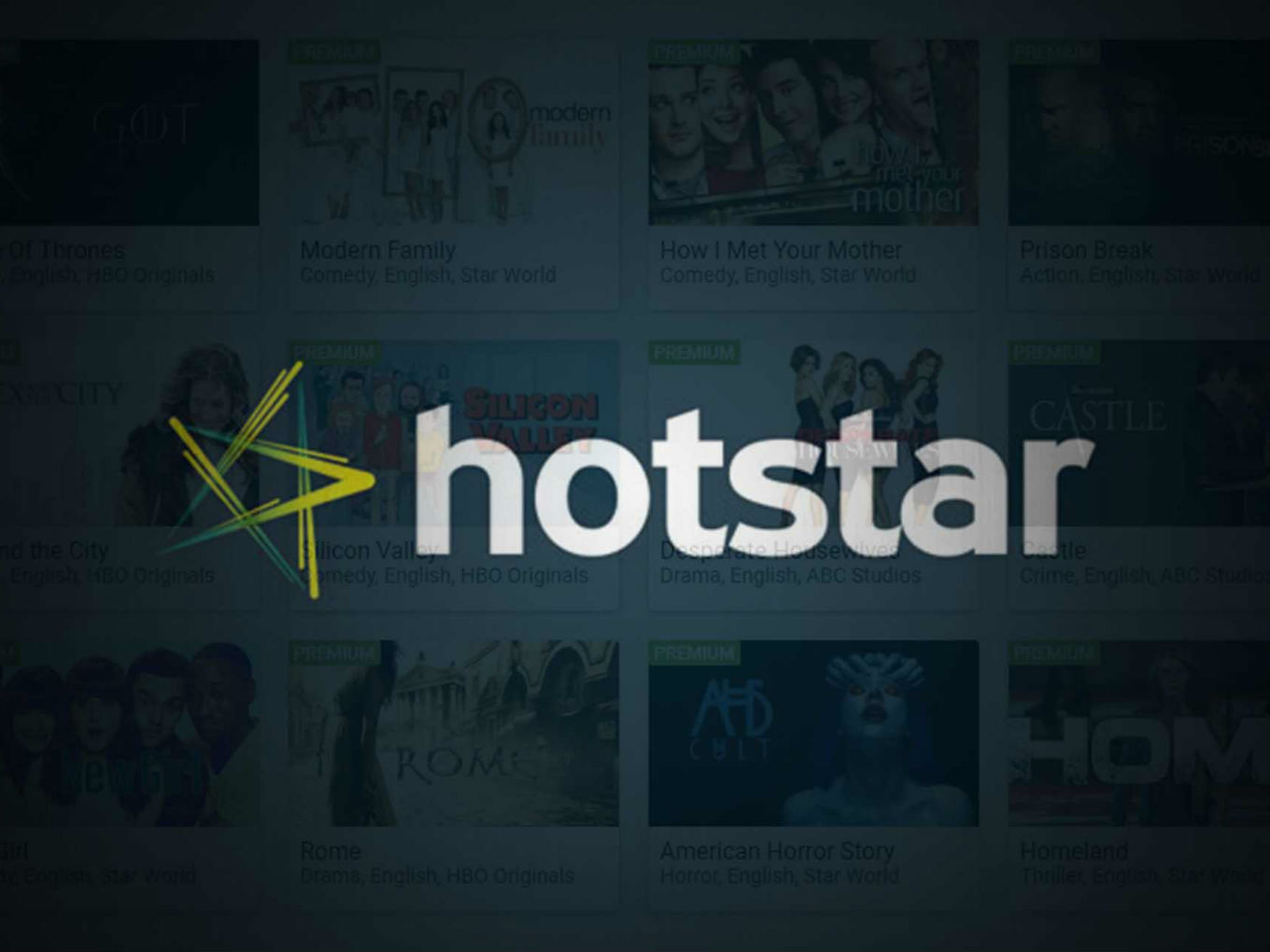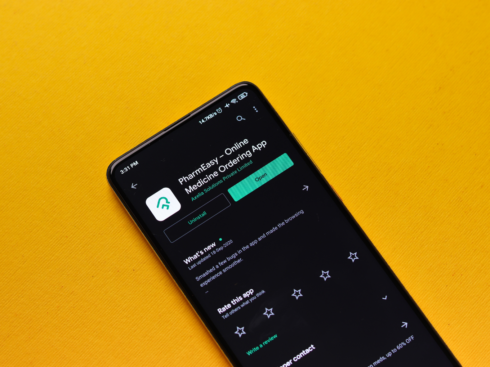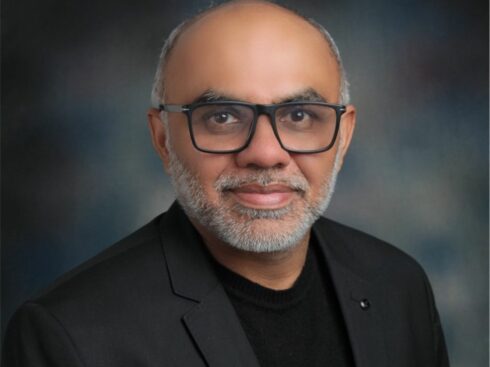SUMMARY
“We see OTT, social and gaming merging,” says Hotstar’s product chief
Hotstar claims to be the largest live service in the world, with over 300 Mn monthly users
The way people will watch TV in the future has not been invented yet, he said
It was just a few years ago that watching international shows such as House of Cards, Game of Thrones or Doctor Who in India was only possible through illegal means such as torrents or pirated streams. This often meant users had to visit shady websites that could easily slip in a virus along with your downloads, not to mention the fact that it could land them in legal trouble.
This was especially true for Game of Thrones (GoT), which is not only one of the most watched shows of all time, it also holds the record for the world’s most pirated show. Game of Thrones first premiered on April 17, 2011, and it’s been eight seasons of unrelenting drama, as audiences come back for more every year.
In December 2015, Star India signed a deal with HBO to offer subscribers access to the latter’s TV shows such as Game of Thrones and as part of the deal, it was also to be streamed on the Star’s video streaming service, Hotstar, which had only arrived on the scene in February that year.
Looking back, this will go down as one of the defining moments in the Indian streaming market and has had a significant contribution to the growth of video streaming services in India. Indians finally had access to premium content for streaming and they could watch shows such as Game of Thrones without feeling like a criminal.
As Game Of Thrones makes its way through the final season, much like the show’s protagonists Jon Snow and Daenerys Targaryen, Hotstar has matured from a fresh face to a superstar. What was a largely neglected sector in India has transformed into a major battleground for the streaming giants of the world.
To understand just how the company has managed to do that and to see where it’s headed next, Inc42 sat down with Varun Narang, Chief Product Officer at Hotstar, who has been at the company since the year of its launch and played a key role in its phenomenal growth.
Since its launch, Hotstar has shown consistent growth and today has 300 Mn monthly active users in India, up from 75 Mn towards the end of 2017. If seen from a numbers perspective Hotstar is far ahead of its competitors, but the journey has not been smooth.
In 2017, the company faced a significant backlash from users before the premiere of Game of Thrones Season 7, which was airing on Hotstar just a few minutes after the United States. What Hotstar users got instead of the show was an error message apologising for a delay. With the final season of Game of Thrones underway, Narang told us these issues have been laid to rest since then.
“Actually the issues were not around streaming but around getting our operations right. This time around we are not going to have those issues and also this year, for the first time we are streaming the episodes at the same time it is shown in America (simulcast),” he said.
Narang does refer to some technical improvements in its platform, but the larger conviction comes from the advancements in the engineering team at Hotstar over the last couple of years.
If everyone who wanted to watch Game of Thrones in India came onto the platform, it wouldn’t be even 10% of the scale we are going to do tonight in cricket — Varun Narang, Hotstar.
We asked Narang, who was previously head of product management at Hulu (a popular US-based video streaming service that produced critically acclaimed shows like The Handmaid’s Tale) where he worked for five years, about how he is getting the tech right and why features like downloading content for offline viewing was not available earlier and one question that many want to be answered — why are users still not able to ‘skip intro’?
Moving Fast On The Things That Matter
On the question of why Hotstar decided to roll out features and improvements at a more gradual pace, Narang essentially brings it down to a matter of priorities.
“There are literally hundreds of things we can do to improve our user experience and one of the key jobs that we do in the product is that we look at what is happening around in the world of technology and use those data points to help us prioritise,” he said.
To put it briefly, Narang and his team always looked to bring in those features first which made the most impact, or as they say in business, which moves the needle the most.
“Our needle definition is total watch time, which is a function of how many users there are, how often they come and how long they stay. You multiply these three and you get the total watch time which is directly correlated to our ad inventory and inversely correlated to our subscribers,” said Narang.
According to those calculations, Narang and team decide which ideas will have the biggest positive impact on watch time and then test out those ideas. Every feature rollout has gone through this process, which Narang highlights have worked out quite well for the company.
“The reason why we have become bigger than everybody else is that we are disciplined in our methodology, and we go after things that move watch time for us. We are working on the ‘Skip intro’ button… I know it is something we have to do and it’s just a matter of time before we roll it out,” said Narang.
The Team Behind The Features
In India, many of the new-age innovations have been utilitarian in nature to tackle the current inefficiencies. Whether it is transport or food delivery, Indian entrepreneurs have shown their ability time and again, but going ahead and attempting to guess the future is not something that gets talked about enough in the Indian ecosystem. That wasn’t the case with Narang.
“We believe that a decade down the road, the way people watch TV has not even been invented yet,” said Narang.
The Hotstar executive follows this up by talking about gamification of TV and predicting that the future of TV, which was once often described as the idiot box. Narang says TV in the future will be closer to Snapchat than Netflix.
“AI will make access to TV and all forms of content more personalised and maybe the future of TV could be built on blockchain.”
To build this future and to keep users content (pun intended) with new features, Narang has a team of about 300 working out of Bengaluru (200 employees) and Beijing (100 employees) who are trying to improve the UI of the platform that many users have called glitchy compared to rivals such as Netflix and Amazon Prime Video.
“We have a solid platform which is both ad-supported and subscription support, and on top of this, we have the opportunity to experiment and innovate. We have a very strong internal engineering team,” said Narang.
Narang stated that most of the employees in the China team are PhDs and Post Doc’s from Tsinghua University in Beijing, (which is often described as the MIT of China) who lead the AI and ML initiatives at Hotstar. For example, the feature of automatic content recommendation for individual users on the platform is led by the Beijing team.
“We have tonnes of data, the moment we see the user, we know if the user is from Calcutta or Chennai, what type of content they like, etc… Our user interface (UI) language also changes based on your location,” said Narang.
What Narang said is significant given the fact we are talking about India which is the land of many languages, cultures and preferences.
For example, suppose you are a Hindi speaking person who is living in Kerala. You watch Hindi content but the system detects that your location is set to Kerala. In terms of identifying what to recommend, the system shows its sophistication by registering your usage pattern and overriding the location and shows you content that is in Hindi or provides you with a match commentary with Hindi as the default language, and so on.
The Great Indian Festival: IPL
The IPL has been the primary driver of growth for Hotstar. The ongoing season has seen all records for Hotstar being broken with 267 Mn viewers in the first three weeks. That is more than the total digital viewership of 202 Mn viewers for the entire 2018 IPL season.
This year, to attract more of the advertising moolah, Hotstar is offering specified ad targeting for advertisers during a live IPL match that reaches the millions of users tuned in.
“What is also cool that we are not aware of any other service in the world that actually provide ad targeting for live events at scale”- Narang
Hotstar is now offering IPL in more languages than ever before (English, Hindi and six other regional languages) and expects the number of users who play its mini-game contests during the live broadcast (called Watch N Play) to double from 30 Mn last year.
“This year, along with emoji reactions, we are also allowing users to text during live matches. To combat trolls or indecent comments, we have an algorithm called the ‘potty mouth filter’ which surfaces these elements and it buries the abusive messages. We also have a comment ranking mechanism, so if it is from one of your friends in the phonebook, we make sure to make them visible to you,” said Narang.
Hotstar now claims to run largest live service in the world and recently saw 12.7 Mn concurrent users during an IPL Match which is an all-time record.
Hotstar is also looking at other innovations, besides these gamification elements. In this year’s IPL, Hotstar has tied up with Swiggy as a partner for food deliveries. Through the partnership, Hotstar viewers can order Swiggy POP meals (Swiggy’s curated single-serve meals) from restaurants around them.
Narang told us about how this partnership came to be. “We love working with Swiggy, both of us have a startup tech company DNA. We thought of feature if one could watch and at the same time order food”.
For Narang, innovations such as these represent the future for streaming. The idea was discussed just a month or two before the IPL started and conversations with Swiggy took about a week or two, and once the teams got down to work, the development didn’t take more than two weeks.
“We see OTT, social and gaming merging,” Narang
Battle Royale OTT
It’s turning out to be a buzzing year for streaming companies in India. There is an OTT explosion happening, with the likes of Netflix announcing 10 new additional original films for India, while Amazon Prime has also unveiled its India-specific slate of programming. Spotify entered the Indian market just two months ago, and amassed a million users within a week, while Youtube launched its premium service in the country, with greater success.
But these video streaming rivals are still trailing Hotstar by a lot. Around the same time in 2017 when Hotstar had 75 Mn users in India, Netflix had 5 Mn subscribers and Amazon Prime Video had 11 Mn users (who get it free as part of their Prime subscription).
A point to note here is that it isn’t clear how many of Hotstar’s current 300 Mn users are premium users, as it does offer free to watch content (with ads) but this base is surely growing.
To give more perspective about Hotstar’s rise, Netflix took nine years to reach 75 Mn subscribers.
The competition in India is heating up. Last year, saw the launch of streaming platforms like Zee5, MX Player, Eros Now and India currently has more than 30 OTT players.
As such this segment increasingly resembles the ecommerce boom of 2013-2014 when many startups servicing different aspects of online shopping were launched. What is also important to note is that a few years down the line most of these players perished and the industry saw a large-scale consolidation.
“The OTT landscape has seen an influx of players across telcos, broadcaster backed platforms, regional only platforms and global majors owing to the mass availability of affordable high-speed data and the resultant increase in video consumption.”
“Since building an OTT business at scale involves significant investments and a rather long gestation period, given that monetisation on OTT hasn’t yet seen an inflection point in time, it is likely that some form of consolidation in the space will play out in the medium to long term,” said Girish Menon, Partner and Head, Media and Entertainment, KPMG in India.
Hotstar is in a prime position to be able to consolidate its position in the OTT segment. Disney, which recently launched its new streaming service Disney +, is reportedly looking to offer all its streamable content through Hotstar in India instead of launching its streaming app here. If that indeed happens, Hotstar will pose a far greater threat to the likes of Netflix and Amazon than ever before, thanks to the huge Disney content inventory.
Hotstar claims that it has the DNA of a startup, but in India, it is certainly not the underdog when compared to Netflix or Amazon Prime. Sure, these companies have been around the scene longer and are more successful in other markets, but in India, Hotstar is clearly the player to beat if one wants to be crowned the streaming king.



























